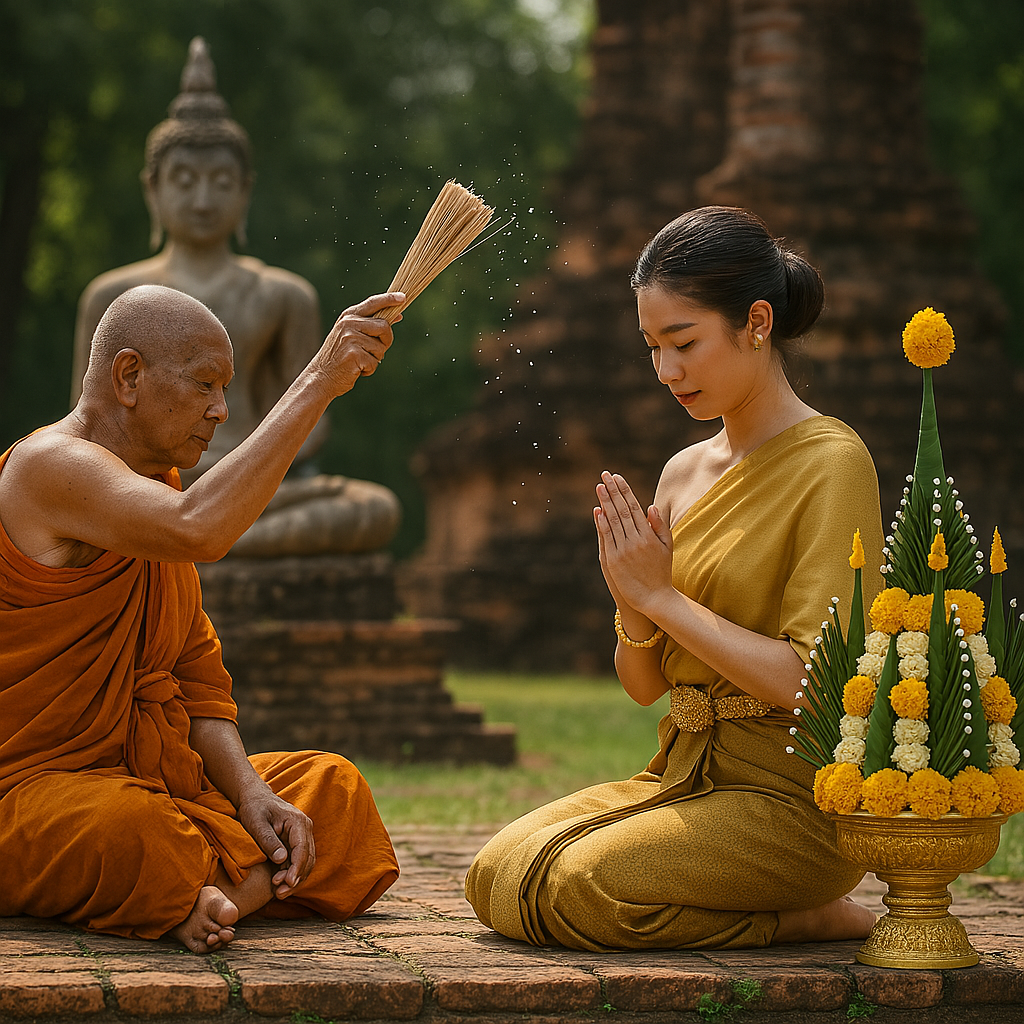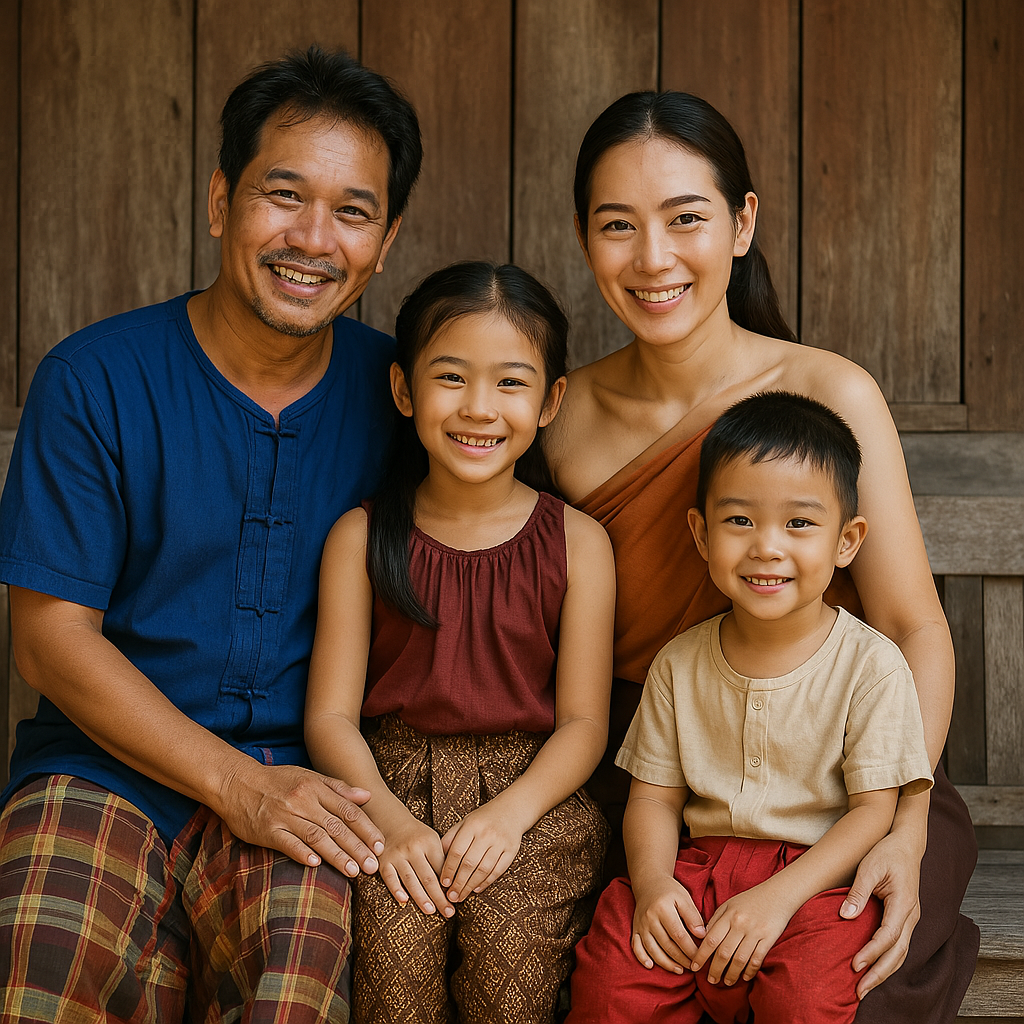
Thailand is known worldwide for its vibrant cultural celebrations and time-honored traditions. From water splashing festivals to lantern releases, these colorful events offer visitors a glimpse into the spiritual beliefs, historical connections, and communal values that form the essence of Thai identity. This comprehensive guide explores Thailand's most significant festivals and enduring cultural traditions.
Major Thai Festivals
Thai festivals (known as "tesakan" ทศกาล in Thai) occur throughout the year, filling the calendar with opportunities to experience Thai culture at its most vibrant:
Songkran: Thai New Year Water Festival
Perhaps Thailand's most famous celebration, Songkran transforms streets into water battlegrounds:
- Celebrated April 13-15 (hottest time of year)
- Water represents purification and washing away of sins and bad luck
- Traditions include gentle water pouring over Buddha images and elders' hands
- Modern celebrations feature water guns, hoses, and street parties
- Many Thai people return to their hometowns to spend time with family
Loy Krathong: Festival of Lights
One of Thailand's most picturesque celebrations happens during the full moon of the 12th lunar month:
- Usually falls in November
- People release floating baskets (krathongs) made of banana leaves onto rivers
- Krathongs contain candles, incense, flowers, and coins
- Symbolizes letting go of anger, grudges, and negative thoughts
- In northern Thailand, coincides with Yi Peng, when thousands of paper lanterns are released into the night sky
Thai Pongal (Sankranti): Harvest Festival
An important celebration marking the harvest season:
- Celebrated in mid-January
- Popular particularly among Thai people of South Indian descent
- Features preparation of sweet rice dish called "pongal"
- Includes decorating cows and offering thanks for a successful harvest
- Houses are cleaned and decorated with colorful kolam patterns
Experience Thai Culture Firsthand
Want to learn more about Thai traditions from someone who lives them? Create your profile on Thais.Love and connect with Thai singles eager to share their cultural heritage.
Join NowVisakha Bucha: Buddha Day
Thailand's most significant Buddhist holiday commemorates three pivotal events in Buddha's life:
- Celebrates Buddha's birth, enlightenment, and death (all believed to have occurred on the same day)
- Falls on the full moon day of the sixth lunar month (usually May)
- Temples hold candlelight processions where devotees circle sacred sites
- Many Thais make merit by releasing captive animals and performing charitable acts
- Alcohol sales are prohibited on this religious holiday
Phi Ta Khon: Ghost Festival
A uniquely colorful and somewhat mysterious festival from northeastern Thailand:
- Celebrated in Loei province, primarily in Dan Sai district
- Features elaborate ghost masks and colorful, ragged costumes
- Commemorates a story from Buddha's previous life
- Includes music, dancing, and processions through the streets
- Celebrates the return of Prince Vessantara (Buddha's penultimate incarnation) to his city
Traditional Thai Ceremonies
Beyond annual festivals, Thailand has numerous important ceremonial traditions that mark life events and spiritual practices:
Wai Kru: Honoring the Teacher Ceremony
A beautiful tradition showing respect to mentors and knowledge-givers:
- Performed annually in schools and by practitioners of Thai martial arts or traditional arts
- Students present offerings of flowers, incense, and candles to teachers
- Includes ritualized prostration before teachers to show gratitude
- Reinforces the high status of teachers in Thai society
- Often features performances demonstrating students' achievements
Khwan Ceremony (Baci Su Khwan)
A spiritual ritual aimed at restoring balance and well-being:
- Centers on the concept of "khwan" (life essence or spirit) that inhabits the human body
- Performed during major life transitions: births, marriages, illness recovery, homecoming
- Features white cotton strings tied around wrists to bind the khwan to the body
- Led by a respected elder or spiritual leader who chants blessings
- Particularly common in northeastern Thailand (Isan) and among Thai-Lao communities
Ordination Ceremony (Buat Nak)
The elaborate and joyous ceremony when a Thai man becomes a monk:
- Most Thai Buddhist men ordain temporarily at least once in their lifetime
- The initiate is dressed as a prince, then has his head and eyebrows shaved
- Procession around the temple three times before formal ordination
- Symbolizes Buddha's renunciation of royal life
- Brings great merit to the participant and his parents
Daily Life Traditions
Thai culture is rich with everyday customs and practices that visitors might encounter:
The Wai Greeting
Thailand's distinctive greeting conveys respect and social awareness:
- Hands pressed together in prayer-like gesture, with a slight bow
- Height of hands indicates the level of respect being shown
- Higher hand position (near forehead) shows greatest respect for monks and elderly
- Younger people initiate the wai to elders, who may return it with a lower wai
- Not expected from foreigners but greatly appreciated when performed correctly
Spirit Houses (San Phra Phum)
Miniature shrines hosting protective spirits found outside most Thai buildings:
- Resemble ornate miniature temples placed on pillars
- Provided as dwelling places for land spirits displaced by building construction
- Regularly supplied with offerings of flowers, incense, candles, and food
- Believed to bring protection and good fortune to residents
- Demonstrate the animistic beliefs that coexist with Buddhism in Thailand
Auspicious Colors and Days
Color symbolism plays an important role in Thai cultural practices:
- Each day of the week has an associated color (Monday: yellow, Tuesday: pink, etc.)
- Many Thais wear the color associated with the day, especially on important occasions
- Yellow is associated with the monarchy and Monday (the King's birthday)
- Red is believed to bring good fortune and is commonly worn during Chinese New Year
- Each color has different spiritual and protective qualities in Thai belief
Regional Festivals and Traditions
Thailand's regional diversity is reflected in local celebrations and customs:
Northern Thailand (Lanna)
The ancient Lanna kingdom maintains distinctive cultural events:
- Yi Peng: Sky lantern festival coinciding with Loy Krathong
- Songkran in Chiang Mai: Features elaborate processions and cultural performances
- Poy Sang Long: Colorful ordination ceremony for novice monks among Shan communities
- Khantoke dinners: Traditional northern Thai meals served on low tables with cultural performances
- Sai Sin ceremony: Sacred thread ritual connecting participants to temple and Buddha images
Northeastern Thailand (Isan)
Isan region celebrates its unique Lao-influenced heritage:
- Bun Bang Fai: Rocket Festival to encourage rainfall for rice planting
- Bun Pha Wet: Festival retelling the Vessantara Jataka tale through elaborate sermons and processions
- Candle Festival: Giant carved wax candles paraded during Buddhist Lent
- Bai Sri Su Kwan: Soul-calling ceremony with more elaborate elements than in other regions
- Mor Lam performances: Traditional singing contests and cultural performances
Southern Thailand
The southern provinces blend Thai, Malay, and Chinese influences:
- Chak Phra: Buddha image processions on elaborately decorated floats
- Vegetarian Festival: Nine-day Taoist cleansing ritual most famous in Phuket
- Lim Ko Niao Shrine Festival: Chinese-Thai celebration in Pattani
- Bullfighting festivals: Traditional contests where bulls compete by locking horns
- Shadow puppet shows (Nang Talung): Ancient storytelling art form
Experiencing Thai Traditions as a Visitor
For travelers interested in engaging with Thai cultural practices:
Respectful Participation
Guidelines for joining in traditional activities:
- Dress modestly when visiting temples or attending ceremonies (covered shoulders and knees)
- Remove shoes before entering homes, temples, and some businesses
- Avoid touching people's heads, as the head is considered sacred
- Point feet away from Buddha images and people, as feet are considered lowly
- Ask permission before photographing monks or sacred ceremonies
Festival Tourism Tips
Practical advice for festival visitors:
- Book accommodations well in advance for major festivals like Songkran and Loy Krathong
- Protect valuables and electronics during water festivals
- Be aware that alcohol is prohibited during major Buddhist holidays
- Check local event schedules, as festival dates change yearly based on lunar calendar
- Consider visiting smaller communities for more authentic festival experiences
Conclusion
Thailand's festivals and traditions offer visitors far more than spectacular photo opportunities—they provide windows into the core values, spiritual beliefs, and social structures that have shaped Thai society for centuries. By understanding the meanings behind these colorful celebrations and everyday practices, visitors can engage more meaningfully with Thai culture.
Whether you're splashing water during Songkran, releasing a krathong onto a moonlit river, or learning the proper way to wai, participating in Thai traditions creates memories that last far beyond your visit. These shared cultural experiences also form the foundation for deeper connections with Thai people, who generally appreciate foreigners who show genuine interest in their customs and traditions.
As Thailand continues to modernize, these festivals and traditions serve as vital links to the country's heritage, helping to preserve cultural identity while welcoming visitors to participate in the ongoing story of Thai culture.

